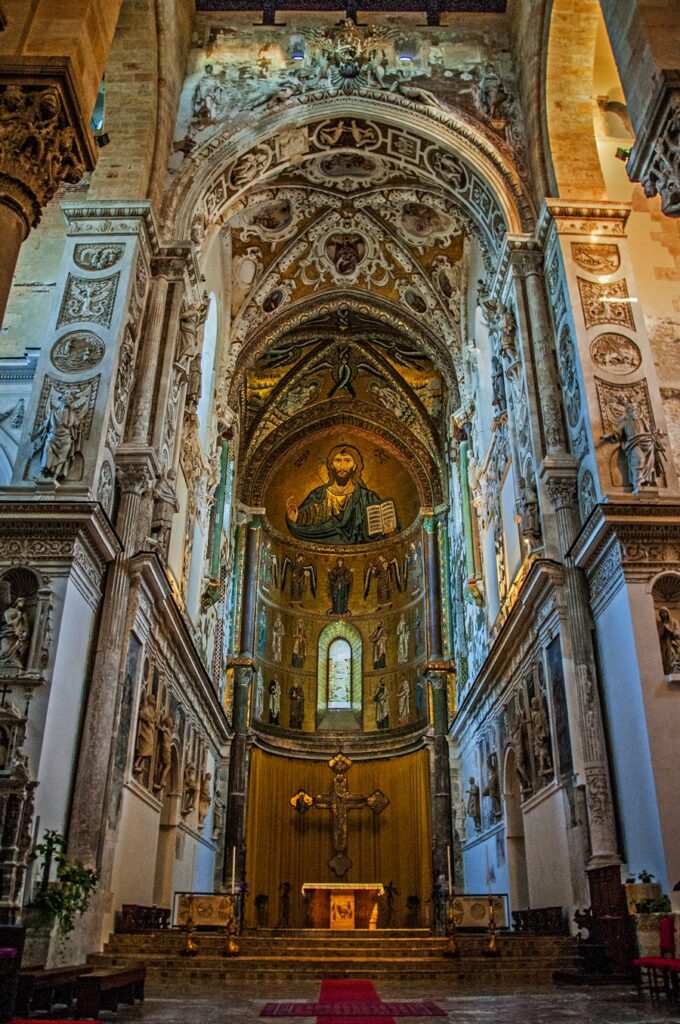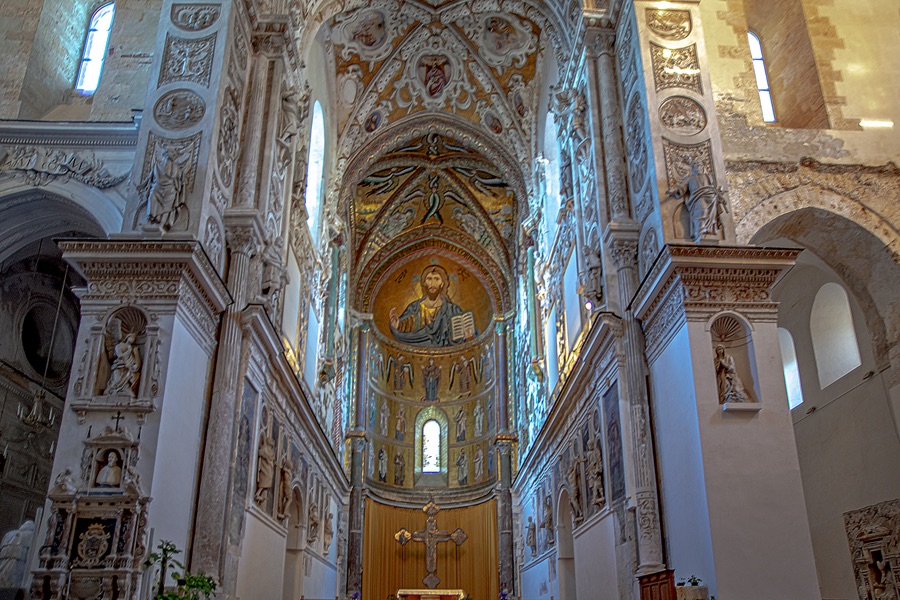For the organisation of space in religious architecture, the year 1000 marked a period of revision of the solutions already initiated in the Carolingian era. The need for a renewed use of the liturgy took on not only symbolic but also rational importance, so much so as to modify the design of the sacred area. The increase in the number of clergy, who came to form a social group distinct from the community of the faithful, made it necessary to enlarge and raise the
presbytery
.
 This change gave the
apse
This change gave the
apse
greater depth, reserving additional space for the creation of the
choir
which was placed in the
nave
in front of the altar.
 The reformulation of spaces, together with the introduction of secondary apses, emphasised the importance of the officiating religious over the faithful, who now attended the celebrations separated by fences (plutei in the Roman rite and iconòstasis in the Greek rite) which enclosed the presbytery. The overall impression of the building continues to reflect that of a vibrant arrangement of spaces, in which the dynamism of the
projecting
The reformulation of spaces, together with the introduction of secondary apses, emphasised the importance of the officiating religious over the faithful, who now attended the celebrations separated by fences (plutei in the Roman rite and iconòstasis in the Greek rite) which enclosed the presbytery. The overall impression of the building continues to reflect that of a vibrant arrangement of spaces, in which the dynamism of the
projecting
structural elements interacts with the recesses which mark the openings, such as windows and portals. In some religious buildings, characterised by thick walls, the is used to compensate for the greater height of the central nave compared to the side aisles. Almost as if to contrast with the elevated position of this gallery, the Romanesque church below its longitudinal plan, often with a
transept
, conceals
crypts
beneath the presbytery, according to a tradition derived from the Carolingian and Ottonian periods.